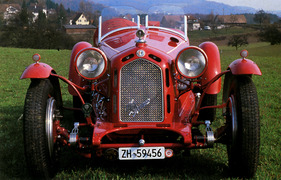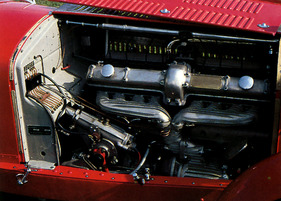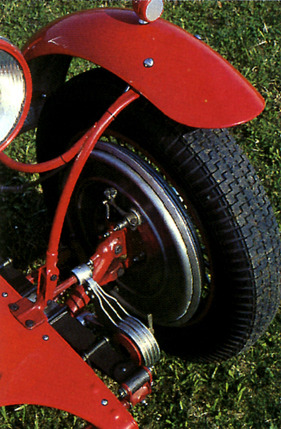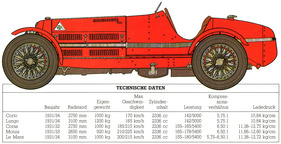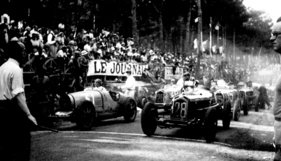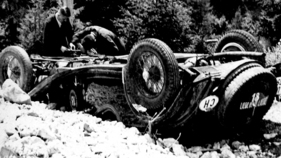Alfa Romeo 8C 2300 - From victory to victory
Summary
One of the most successful Alfa Romeo sports cars was the 6C1750. It drove to many victories and helped the factory to unprecedented publicity. In order to be sure of such successes in the future, Alfa's engineers designed the 8C2300 in 1930. And they were successful again and the car was a winner.
This article contains the following chapters
- Alfa Romeo must win
- An 8-cylinder Alfa for circuit racing
- Nothing worked with pure benzene
- The road car
- The red Alfa
Estimated reading time: 8min
Preview (beginning of the article)
One of the most successful Alfa Romeo sports cars was the 6C 1750, which won many victories and helped the company achieve unprecedented publicity. To ensure continued success in the future, Alfa's engineers designed the 8C 2300 in 1930. It was again Vittorio Jano who was commissioned to design a sports car engine for Alfa Romeo, similar to what he had already done for the 6C1750. But this time it was to be an 8-cylinder engine. This was constructed from two 4-cylinder blocks with two separate cylinder heads . The drive for the two overhead camshafts was tapped between these blocks. The Rootes compressor and the Memini carburetor were located to the right of the front engine block. The bore and stroke remained the same as the 6-cylinder 6C1750. This resulted in a cylinder capacity of 2336 cm3. With a compression ratio of 5.75:1, the 8-cylinder in-line engine produced 142 hp at 5000 rpm. Two such cars were entered for the 5th Mille Miglia, which took place on April 11, 1931. Unfortunately, the cars had not been tested enough before the race. The Alfa team would have preferred to drive the tried and tested 6C 1750. However, when it became known that Rudolf Caracciola would be competing in a new Mercedes SSKL with a 7-liter supercharged engine, Jano decided to go for the new 8-cylinders. Caracciola was the first foreigner to win the race with a lead of 11 minutes. The Nuvolari/Guidotti team finished ninth overall and second in their class with the 8C 2300. On the outward journey from Brescia to Rome, the 8C 2300 had had to change its tires nine times, and on the way back it had even gone off the road. The second car, driven by Arcangeli/Bonini, had fared no better. Admittedly, like the Nuvolari car, their car had also led for a while, but near Verona it had crashed beyond repair.
Continue reading this article for free?
Photos of this article

















